FIP stands for Feline Infectious Peritonitis or infectious peritonitis in cats. It is a serious illness caused by a common diarrheal virus (coronavirus). This virus is actually not that dangerous, most cats recover after 1 or 2 days of diarrhea. However, in some cats, the virus mutates into a malignant variant. This malignant variant causes inflammation elsewhere in the body. It is unclear exactly why the virus mutates. Stress, the cat's immune system, certain infections (such as FIV/feline AIDS and FeLV), pregnancy and parturition, moving house and buying another cat, among others, may play a role in the mutation.
How does my cat get FIP?
Any cat can be unlucky enough to get FIP. 90% of cats with FIP are under 1 year old and 10% of cats with FIP are over 10 years old.
The coronavirus is a virus that is widespread in the environment. Some animals get diarrhea, some animals show no symptoms at all. A cat with diarrhea does not always have a corona virus. Many cats that contract the virus can clear the infection on their own before the virus becomes malignant. Cats living with more than 6 animals have an increased risk of infection. Because if a cat develops diarrhea caused by a coronavirus, any cat can become infected with this virus again and again.
What are the symptoms of FIP?
There are two forms of FIP, dry and wet. In the wet form, there is a lot of fluid in the abdomen (and sometimes in the chest). In the dry form, organs are affected (such as the liver, kidneys, intestines, brain and spinal cord). There is also a mixed form where the animals have both dry and wet FIP.
Generally, cats with FIP will present with fever and weight loss. In addition, cats with the wet form often suffer from a bulging abdomen (fluid) or shortness of breath (fluid in the lungs). Cats with the dry form can experience many different symptoms, depending on the organ affected. For example; Eye problems, neurological disorders (such as staggering and paralysis), jaundice, paleness, and anemia.
How is FIP diagnosed?
The diagnosis of the wet form is quite simple. Your vet can pierce your cat's abdomen with a needle and draw some liquid. This is an easy method and (almost) every cat allows it. Based on the moisture, the veterinarian can tell whether it is FIP.
If it is the dry form, only an autopsy (examination of a deceased animal) can prove that it was FIP.
Additional blood tests can show several abnormalities that can indicate FIP. Unfortunately, there is no blood test to directly diagnose FIP. In many cases, the diagnosis must therefore be made on the basis of the symptoms and the additional blood test.
What can I do against FIP?
Unfortunately, FIP is incurable. What you can do to support your cat is suppress the immune system with corticosteroids. Removing fluid from the abdomen and chest can provide temporary relief. Unfortunately, every cat with FIP will eventually die.
Sometimes you can support your cat even more with tube feeding and drip feeding. In many cases, your cat will then have to be admitted.
Can I prevent FIP in my cat?
Only cats can get FIP. A cat with FIP cannot transmit it to another cat, only the coronavirus can be transmitted from one cat to another. Then it depends on the cat (and its immune system) whether this coronavirus mutates into FIP. As previously mentioned, the more cats in the area that are infected with (and therefore excrete) the coronavirus, the greater their chances of contracting FIP.
There was once a vaccine against FIP, but its effectiveness is questionable. This is because the coronavirus mutates in cats and it's not exactly clear how this works. The malignant variant that causes FIP looks different in each cat, so vaccination has little effect.
The most important thing is to prevent infection with the coronavirus as much as possible. The coronavirus spreads through feces, so you have to clean well. Especially if you have multiple cats. Cats with FIP can also shed the Corona virus, so it is advisable not to adopt a new cat for two months after your cat's death. The virus needs this time to become inactive.
This text was translated by a translation machine
 Horse Pharmacy
Horse Pharmacy Rugs
Rugs Care
Care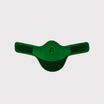 Saddle and Attachments
Saddle and Attachments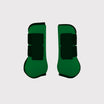 Leg Protection
Leg Protection Bridles
Bridles Feed
Feed Fly Masks
Fly Masks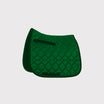 Saddle Pads
Saddle Pads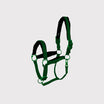 Headcollars and Ropes
Headcollars and Ropes Bits
Bits Other Disciplines
Other Disciplines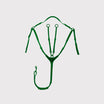 Reins and Auxiliary Reins
Reins and Auxiliary Reins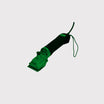 Clipping
Clipping Western
Western Eventing
Eventing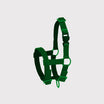 Foals
Foals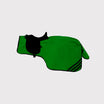 Reflection
Reflection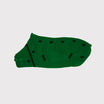 Therapy Products
Therapy Products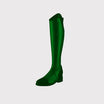 Boots and Shoes
Boots and Shoes Breeches and Belts
Breeches and Belts Tops
Tops Safety
Safety Competition
Competition Heated Clothing
Heated Clothing Gloves
Gloves Socks
Socks Spurs and Attachments
Spurs and Attachments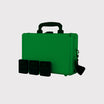 Technology
Technology Whips
Whips Gifts
Gifts Casual Wear
Casual Wear Underwear
Underwear Rider Pharmacy
Rider Pharmacy Bags
Bags Books
Books Laundry supplies
Laundry supplies Jewelry
Jewelry Feed and Waterbowls
Feed and Waterbowls Equipment
Equipment Tack Room
Tack Room Pest Control
Pest Control Arena
Arena Horse Toys
Horse Toys Wheelbarrows
Wheelbarrows Yard
Yard Surveillance
Surveillance Disinfect
Disinfect Washing Area
Washing Area Lighting
Lighting Horse Pasture
Horse Pasture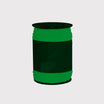 Current Conductors
Current Conductors Pole
Pole Insulators
Insulators Energisers
Energisers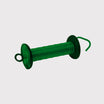 Gate Handles
Gate Handles Batteries and Accumulator
Batteries and Accumulator Nets
Nets Grounding
Grounding Tools
Tools Fencing Security
Fencing Security Wolf Defense
Wolf Defense Fencing Sets
Fencing Sets Fence locks
Fence locks Dogs
Dogs Cats
Cats Rodents
Rodents Dogs Pharmacy
Dogs Pharmacy Cats Pharmacy
Cats Pharmacy Rodents Pharmacy
Rodents Pharmacy Cattle Pharmacy
Cattle Pharmacy Poultry Pharmacy
Poultry Pharmacy Veterinary Supplies
Veterinary Supplies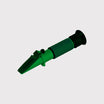 Cattle
Cattle Sheep and Goats
Sheep and Goats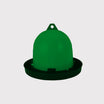 Poultry
Poultry Heat Lamps
Heat Lamps Calves
Calves Marking
Marking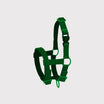 Halters
Halters